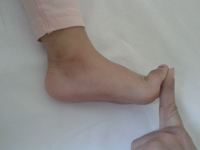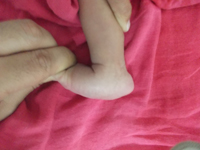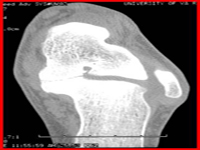Flat Feet


Title: Understanding Flat Feet in Children: Causes, Treatment, and Care.
Introduction: Flat feet, a common condition among children, occurs when the arches on the inside of the feet are flattened, causing the entire sole to make contact with the ground. While many children have flat feet naturally, some cases might require attention and management. Dr. Sameer Desai, a distinguished pediatric orthopedic surgeon in Pune, brings his expertise to shed light on this condition, its causes, treatment options, and preventive measures.
What are Flat Feet? Flat feet, also known as pes planus, occur when the arches of the feet don’t develop fully during childhood, leading to the sole of the foot lying flat on the ground. While many infants and toddlers naturally have flat feet due to undeveloped arches, most of them will develop a normal arch as they grow. However, in some cases, the arches remain undeveloped, leading to flat feet in older children and adolescents.
Causes:
Genetics: Family history plays a significant role in the development of flat feet. If parents or close relatives have flat feet, there’s a higher likelihood that a child
might inherit the condition.
Muscular Weakness: Weak muscles in the feet and ankles can fail to provide proper support to the arches, leading to flat feet.
Abnormal Foot Development: Some children might be born with abnormal foot structures that contribute to flat feet.
Injury: Trauma to the feet or ankles can impact the development of arches and lead to flat feet.
Medical Conditions: Certain medical conditions such as cerebral palsy, Down syndrome, or connective tissue disorders can influence the development of arches.
When to Consult a Specialist: It's important to consult a pediatric orthopedic specialist like Dr. Sameer Desai if:
● Your child experiences foot pain or discomfort, particularly after physical activity.
● You notice difficulty in walking or a change in your Childs’s gait.
● Your child’s feet appear to be rigidly flat, causing problems with mobility.
● One foot appears flatter than the other.
Treatment and Management: Dr. Sameer Desai emphasizes a personalized approach to treating flat feet in children. Treatment options include:
Observation: In many cases, flat feet resolve on their own as children grow. Regular observation and monitoring are important.
Physical Therapy: Strengthening exercises and stretches can help improve the muscles & ability to support the arches.
Orthotic Devices: Custom-made arch supports or shoe inserts can provide additional support and alignment.
Footwear: Proper footwear with adequate arch support can alleviate discomfort and aid in the development of arches.
Surgery: In rare cases where severe pain or deformity persists into adolescence, surgical intervention might be considered. Dr. Sameer Desai can provide expert guidance on whether surgery is necessary.
Preventive Measures: While not all cases of flat feet can be prevented, parents can take certain measures to support their child’s foot development:
● Encourage regular physical activity to strengthen foot and leg muscles.
● Choose appropriate footwear with arch support and proper cushioning.
● Avoid excessively flat or unsupportive shoes.
● Maintain a healthy weight to reduce stress on the feet.
Conclusion: Flat feet are a common concern among parents, but with the right approach, most cases can be effectively managed or even resolve over time. Dr.
Sameer Desai, a renowned pediatric orthopedic surgeon in Pune, offers expert guidance and comprehensive care for children with flat feet. By understanding the causes,
seeking timely consultation, and following appropriate treatments, parents can ensure their child’s optimal foot health and overall well-being.



